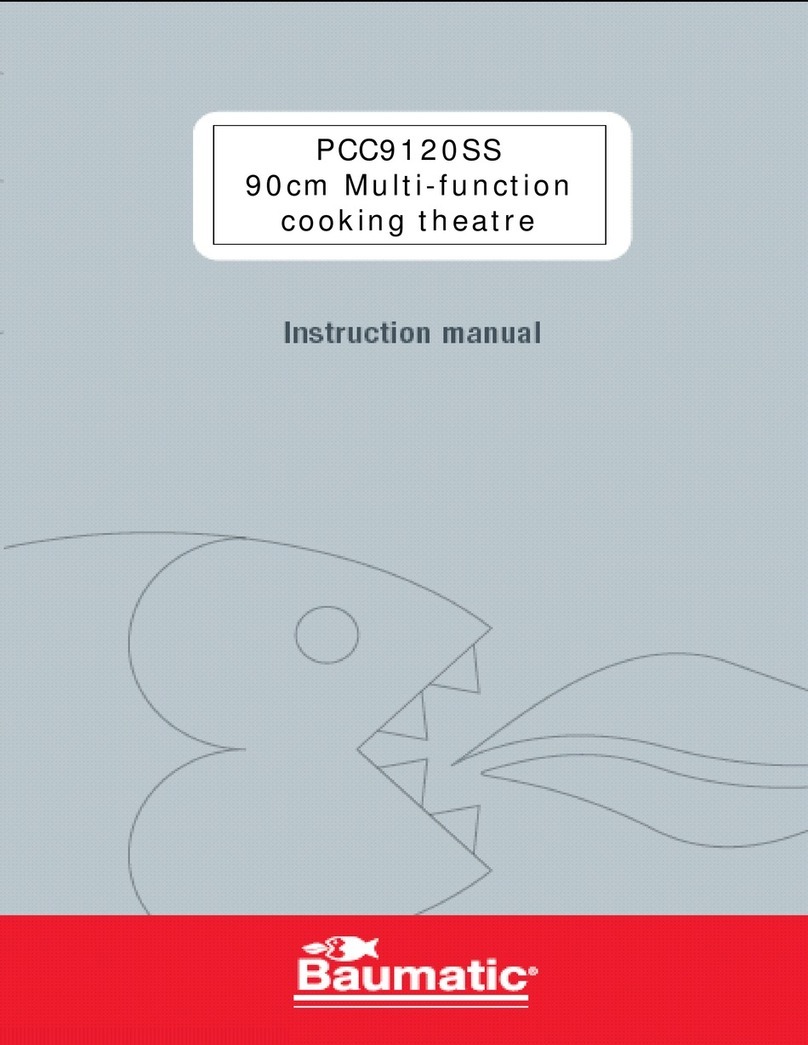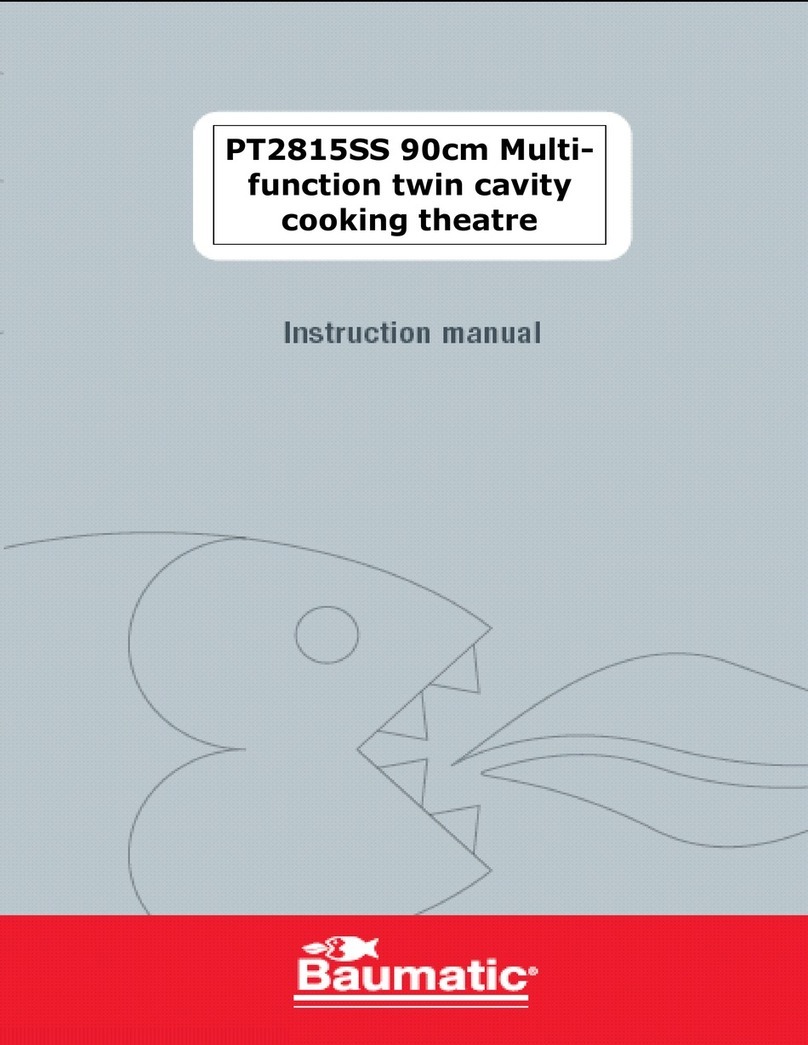Safety Instructions
Warning! Do not heat pure alcohol or
alcoholic drinks in the microwave. FIRE
RISK!
Beware!
To avoid food overheating or burning it is
very important not to select long time
periods or power levels that are too high
when heating small quantities of food. For
example, a bread roll can burn after 3
minutes if the power selected is too high.
For toasting, use just the grilling function and
watch the oven all the time. It you use a
combined function to toast bread it will catch
fire in a very short time.
Make sure you never catch the power cables
of other electrical appliances in the hot door
or the oven. The cable insulation may melt.
Danger of short-circuiting!
Take care when heating liquids!
When liquids (water, coffee, tea, milk, etc.)
are nearly at boiling point inside the oven
and are taken out suddenly, they may spurt
out of their containers.
DANGER OF INJURIES AND BURNS!
To avoid that type of situation when heating
liquids, put a teaspoon or glass rod inside
the container.
Avoid damaging the oven or other
dangerous situations by following these
instructions:
Do not switch on the oven without the
turntable support, the turntable ring and the
respective plate being in place.
Never switch on the microwave when it is
empty. If there is no food inside there may
be an electrical overcharge and the oven
could be damaged.
RISK OF DAMAGE!
For carrying out oven programming tests put
a glass of water inside the oven. The water
will absorb the microwaves and the oven will
not be damaged.
Do not cover or obstruct the ventilation
openings.
Use only dishes suitable for microwaves.
Before using dishes and containers in the
microwave, check that these are suitable
(see the section on types of dishes).
Never remove the mica cover on the ceiling
of the oven interior! This cover stops fat and
pieces of food damaging the microwave
generator.
Do not keep any inflammable object inside
the oven as it may burn if the oven is
switched on.
Do not use the oven as a pantry.
Do not use the oven for frying as it is
impossible to control the temperature of oil
heated by microwaves.
Do not lean or sit on the open oven door.
This may damage the oven, especially in the
hinge zone. The door can bear a maximum
weight of 8 kg.
The turntable and the grills can bear a maximum
load of 8 kg. To avoid damaging the oven, do not
exceed this load.





























